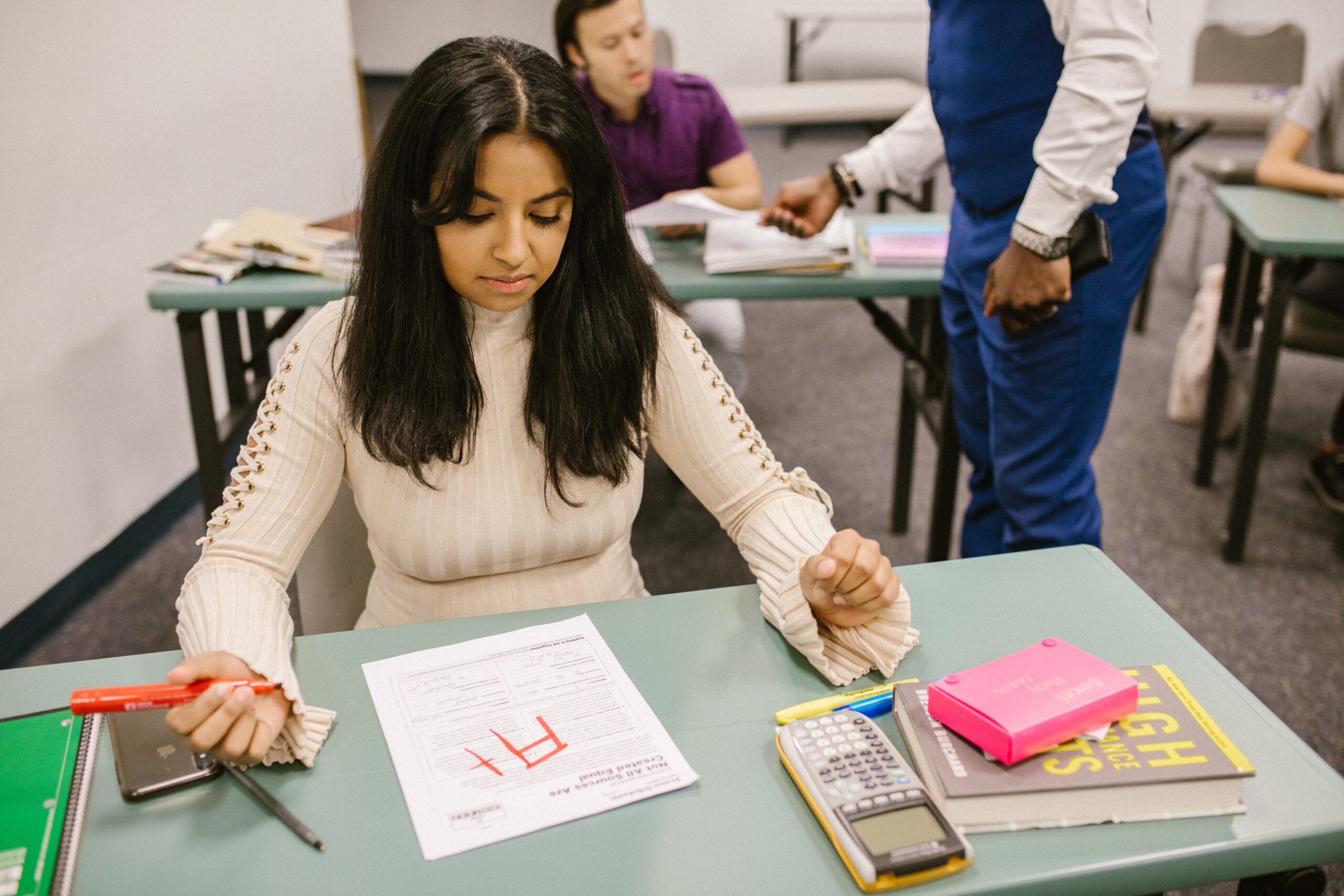Education has long been hailed as the great equalizer, providing individuals with the tools and opportunities needed to succeed in life. However, the stark reality is that not all students have equal access to quality education, leading to a persistent and widening education gap.
In this exploration, we will delve into the root causes of the education gap, examine its far-reaching consequences on societal inequality, and discuss potential strategies to bridge this divide and create a more equitable future.
Understanding the Education Gap
The education gap refers to the disparities in educational attainment and achievement between different groups of students. These disparities manifest along various lines, including socioeconomic status, race, ethnicity, and geographic location.
While the education gap is a multifaceted issue, several key factors contribute to its existence, perpetuating a cycle of inequality.
1. Unequal Access to Resources
One of the primary contributors to the education gap is the unequal distribution of resources among schools. Schools in affluent neighborhoods often benefit from robust funding, experienced teachers, advanced technology, and a wide array of extracurricular activities.
In contrast, schools in low-income areas may struggle with inadequate funding, outdated textbooks, and a lack of essential resources. This disparity in resources creates a stark divide in the quality of education available to students.
Students in well-funded schools have access to a more enriching and supportive learning environment, while those in underfunded schools face challenges that hinder their academic success.
2. Socioeconomic Factors
Socioeconomic status plays a significant role in shaping educational outcomes. Families with higher incomes can afford educational resources such as private tutoring, test preparation courses, and a variety of educational experiences.
On the other hand, families facing financial constraints may find it difficult to provide these supplementary resources, putting their children at a disadvantage. Moreover, the impact of socioeconomic status extends beyond financial considerations.
Students from low-income families may face additional challenges, including limited access to healthcare, unstable living conditions, and a lack of exposure to cultural and educational opportunities. These external factors can significantly impede a student’s ability to excel academically.
3. Racial and Ethnic Disparities
Persistent racial and ethnic disparities contribute significantly to the education gap. Students of color often face systemic barriers, including unequal access to quality teachers, advanced placement courses, and extracurricular opportunities. Discriminatory policies and practices, both historical and contemporary, have created a pervasive and enduring gap in educational outcomes.
Additionally, cultural biases within educational systems may lead to disparities in disciplinary actions, special education placement, and access to advanced programs. These inequities perpetuate a cycle of disadvantage for students of color, limiting their educational attainment and subsequent life opportunities.
4. Inadequate Pre-school and Early Education Opportunities
The foundation of a child’s educational journey is laid in the early years of life. Disparities in access to quality pre-school and early education programs can set the stage for long-term academic gaps. Children from economically disadvantaged backgrounds may not have the same access to enriching early learning experiences that can foster cognitive development, social skills, and a love for learning.
Closing the education gap requires addressing these root causes and implementing comprehensive strategies that prioritize equal access to resources and opportunities for all students, regardless of their background.
The Consequences of the Education Gap
The consequences of the education gap extend far beyond the confines of the classroom. They permeate every aspect of an individual’s life and contribute to the perpetuation of societal inequalities. Understanding these consequences is crucial for recognizing the urgency of addressing the education gap as a fundamental step towards fostering a more equitable society.
1. Limited Economic Mobility
Education has long been considered a pathway to economic mobility. However, the education gap limits this mobility for many individuals, particularly those from marginalized communities. Without access to quality education, individuals are more likely to face economic hardships, reduced employment opportunities, and lower lifetime earnings.
2. Reinforcement of Social Inequality
The education gap reinforces and perpetuates existing social inequalities. When certain groups consistently face barriers to educational success, it deepens the divides within society. This perpetuation of inequality hinders the creation of a fair and just social structure, where individuals can access equal opportunities and contribute meaningfully to their communities.
3. Impact on Health and Well-being
Education is intricately linked to overall health and well-being. Individuals with lower levels of education are more likely to face health disparities, including limited access to healthcare, higher rates of chronic diseases, and reduced life expectancy. Addressing the education gap is not only a matter of academic achievement but also a crucial step in promoting holistic well-being for all.
4. Social and Civic Engagement
A well-rounded education is instrumental in fostering social and civic engagement. Students exposed to diverse perspectives, critical thinking, and civic education are better equipped to participate in democratic processes, contribute to community development, and advocate for positive social change. The education gap diminishes these opportunities for engagement, limiting the ability of marginalized communities to actively participate in shaping the future of society.
Strategies for Closing the Education Gap
Addressing the education gap requires a multifaceted approach that tackles its root causes and promotes systemic change. Here are few of the key strategies to consider:
1. Equitable Funding Allocation
Ensuring that schools receive equitable funding is a foundational step toward closing the education gap. Reforms in funding distribution should prioritize schools in low-income areas, providing them with the resources necessary to create a supportive learning environment.
This includes investments in infrastructure, teacher salaries, technology, and extracurricular programs.
2. Access to High-Quality Early Education
Early childhood education plays a pivotal role in shaping future academic success. Implementing universal access to high-quality pre-school programs can level the playing field and give all children a strong foundation for their educational journey.
By addressing disparities in early education opportunities, we can narrow the initial gaps that often persist throughout a student’s academic career.
3. Teacher Training and Recruitment
Ensuring that all students have access to well-qualified and experienced teachers is essential for closing the education gap. Investment in teacher training programs, particularly in areas with high-needs schools, can enhance the quality of education provided.
Additionally, efforts to diversify the teaching workforce can contribute to creating a more inclusive and culturally responsive learning environment.
4. Curriculum Diversity and Inclusion
A curriculum that reflects the diversity of students’ experiences and backgrounds is crucial for fostering an inclusive educational environment. Integrating diverse perspectives, histories, and cultures into the curriculum helps create a more engaging and relevant learning experience for all students.
This approach not only promotes cultural understanding but also empowers students to see themselves in the material being taught.
5. Community Engagement and Parental Involvement
Engaging communities and involving parents in the educational process are vital components of closing the education gap. Establishing partnerships between schools, community organizations, and families can create a support network that enhances students’ educational experiences.
This collaborative approach ensures that education is viewed as a shared responsibility, with the community actively contributing to the success of its students.
6. Technology Access and Digital Literacy
In the digital age, access to technology is integral to educational success. Ensuring that all students have access to devices and reliable internet connectivity is crucial for closing the technology gap.
Additionally, promoting digital literacy skills equips students with the tools needed to navigate an increasingly technology-driven world.
7. Addressing Implicit Bias and Discrimination
Systemic biases within educational institutions can perpetuate disparities in academic outcomes. Training educators to recognize and address implicit biases, implementing anti-bias curriculum, and fostering a culture of inclusivity can contribute to creating a more equitable learning environment.
8. Comprehensive Student Support Services
Providing comprehensive support services, including counseling, mentorship programs, and academic support, can address the non-academic barriers that hinder student success. Recognizing and addressing the social and emotional needs of students is integral to fostering a positive and inclusive learning environment.
Conclusion
Closing the education gap is not just a matter of academic achievement; it is a fundamental step toward building a more equitable and just society. The disparities in educational opportunities perpetuate a cycle of inequality that affects every aspect of individuals’ lives, from economic mobility to health and civic engagement.
Addressing the root causes of the education gap requires a collective and sustained effort. By prioritizing equitable funding, early education access, teacher training, curriculum diversity, community engagement, and comprehensive support services, we can create an educational system that uplifts all students, regardless of their background.
As we envision a future where every individual has an equal opportunity to reach their full potential, it is imperative that we commit to dismantling the systemic barriers that perpetuate the education gap. In doing so, we not only create a more just education system but also lay the foundation for a society where everyone can contribute, thrive, and participate in the collective pursuit of progress and prosperity.




